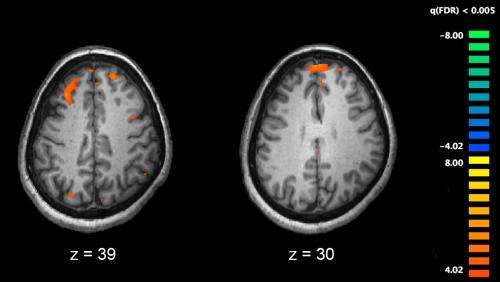Highly organised protein structure implicated in schizophrenia

Schizophrenia is associated with enormous personal, familial and societal cost. Exactly how genetic and environmental risk factors act together to lead to the development of schizophrenia is as yet unknown. As a result, current treatments target symptoms rather than underlying causes and do not achieve complete remission.
Researchers in UCD, the Royal College of Surgeons in Ireland and Beaumont Hospital have published findings in Molecular Psychiatry that implicate proteins and genes associated with the postsynaptic density (PSD) in schizophrenia. This improved characterisation may suggest novel treatments to target this structure in the future.
The PSD is a complex network of proteins with roles in cell scaffolding and signalling that are critical to the normal transmission of neural messages and to adaptive behaviours like learning and memory.
There is strong evidence to support the view that the synaptic neurotransmitter, N-methyl-D-aspartate (NMDA) receptor hypofunction contributes to the pathophysiology of schizophrenia. It has been proposed that the PSD may contribute to this through dysregulation of NMDA receptor recycling.
The team firstly enriched for the PSD in the anterior cingulate cortex in schizophrenia and control tissue obtained from the Stanley Medical Research Institute before using liquid chromatography-mass spectrometry to quantify differential protein expression.
"We combined proteomic and genomic methods to characterise postsynaptic density-associated protein expression in schizophrenia. We found more than 700 protein identifications and 143 differentially expressed proteins in the PSD. Our pathway analysis of these differentially expressed proteins implicated the cellular processes of endocytosis, long-term potentiation and calcium signalling", said Conway Fellow, Dr Gerard Cagney.
The resulting data provides robust evidence implicating PSD- associated proteins and genes in schizophrenia and suggest that NMDA interacting and endocytosis related proteins within this multiprotein complex contribute to disease pathophysiology.
"Our study may provide the first evidence pointing towards pharmacological manipulation of (Clathrin-mediated) endocytosis as a novel treatment for schizophrenia", outlined Dr Melanie Föcking, first author and postdoctoral researcher with Prof David Cotter in the Department of Psychiatry, Royal College of Surgeons in Ireland.
More information: Föcking M, Lopez LM, English JA, Dicker P, Wolff A, Brindley E, Wynne K, Cagney G, Cotter DR. "Proteomic and genomic evidence implicates the postsynaptic density in schizophrenia." Mol Psychiatry. 2014 Jul 22. DOI: 10.1038/mp.2014.63.
















